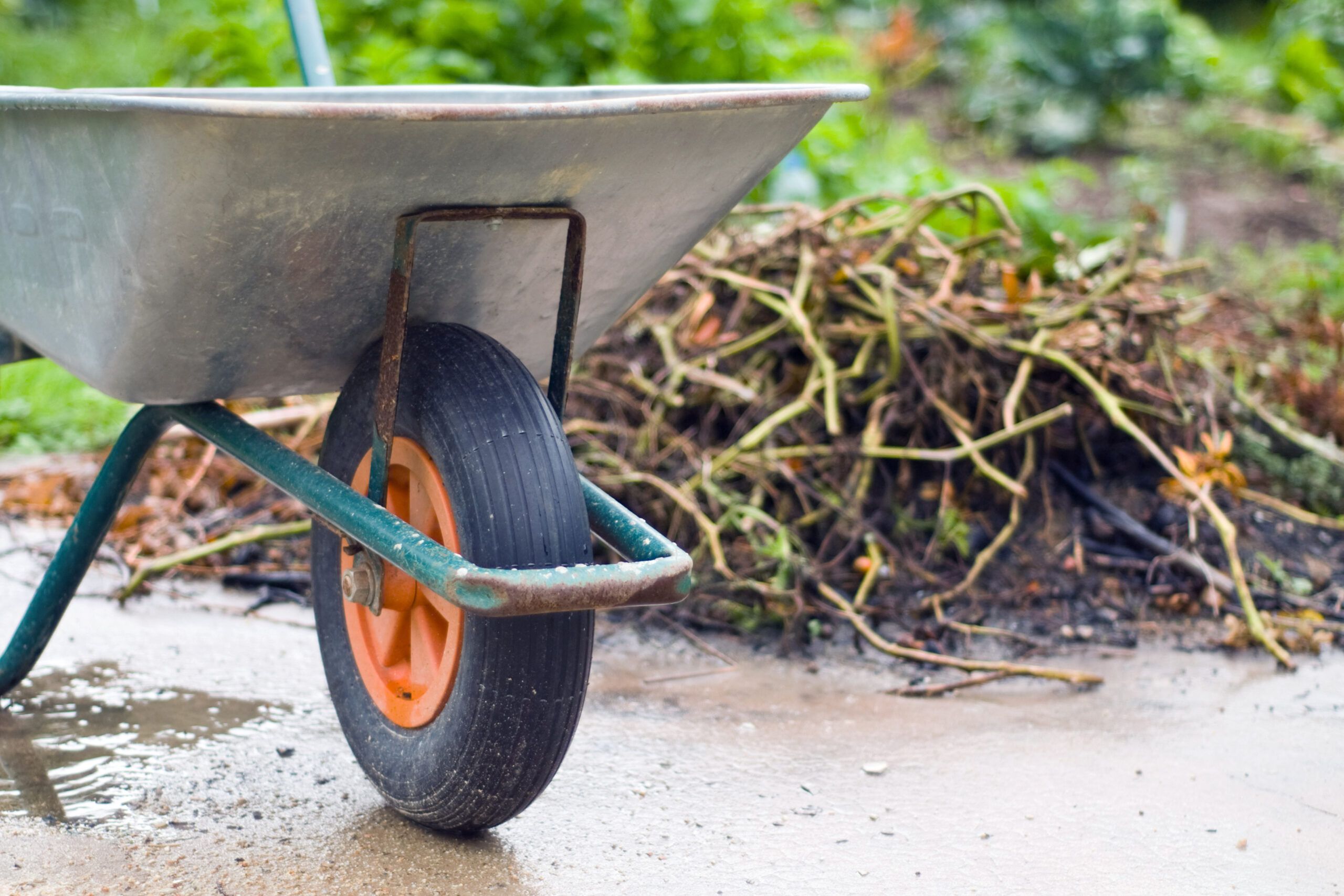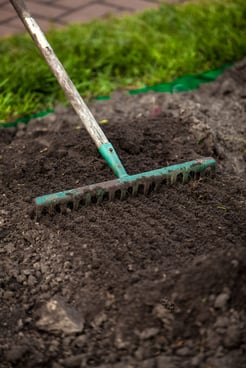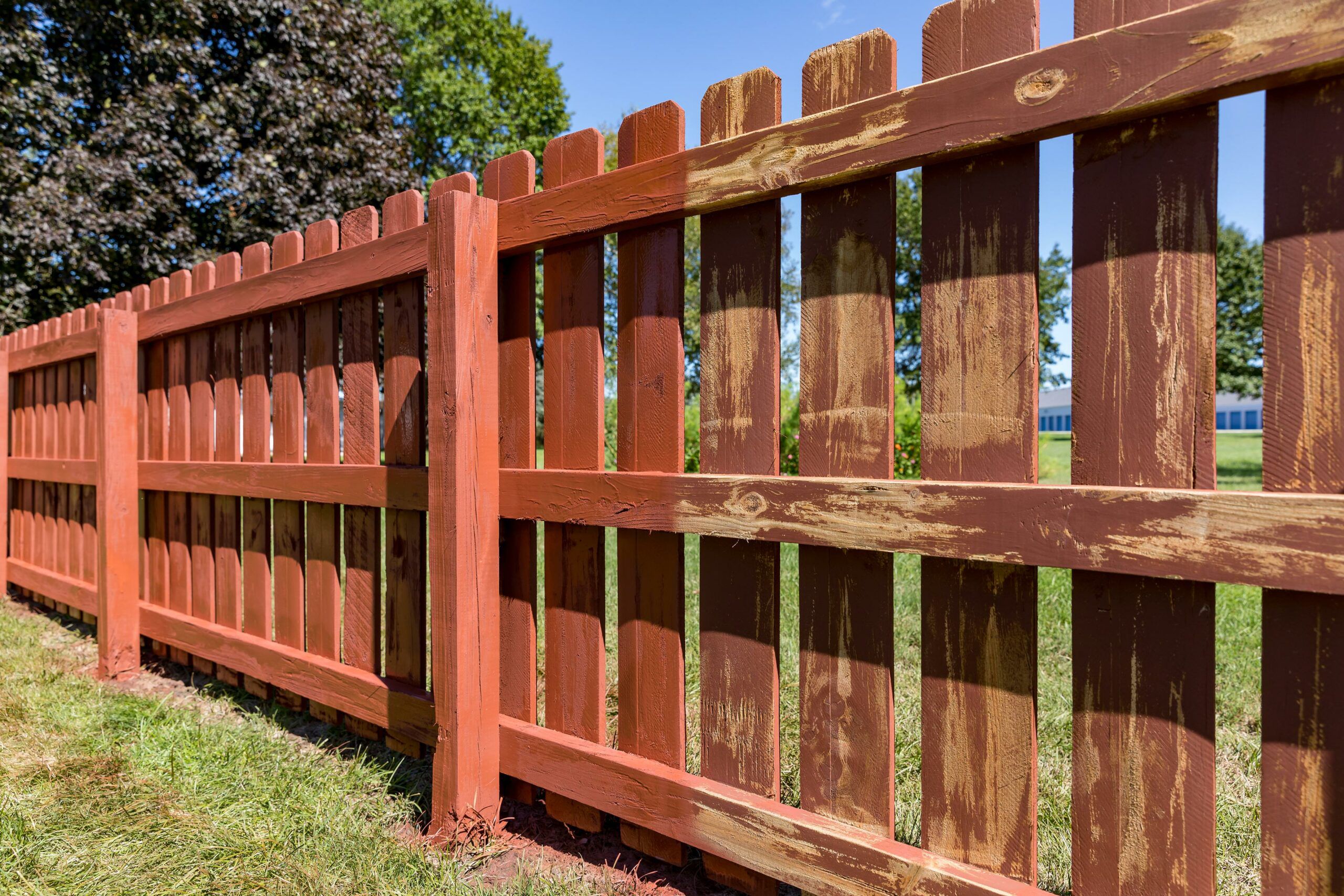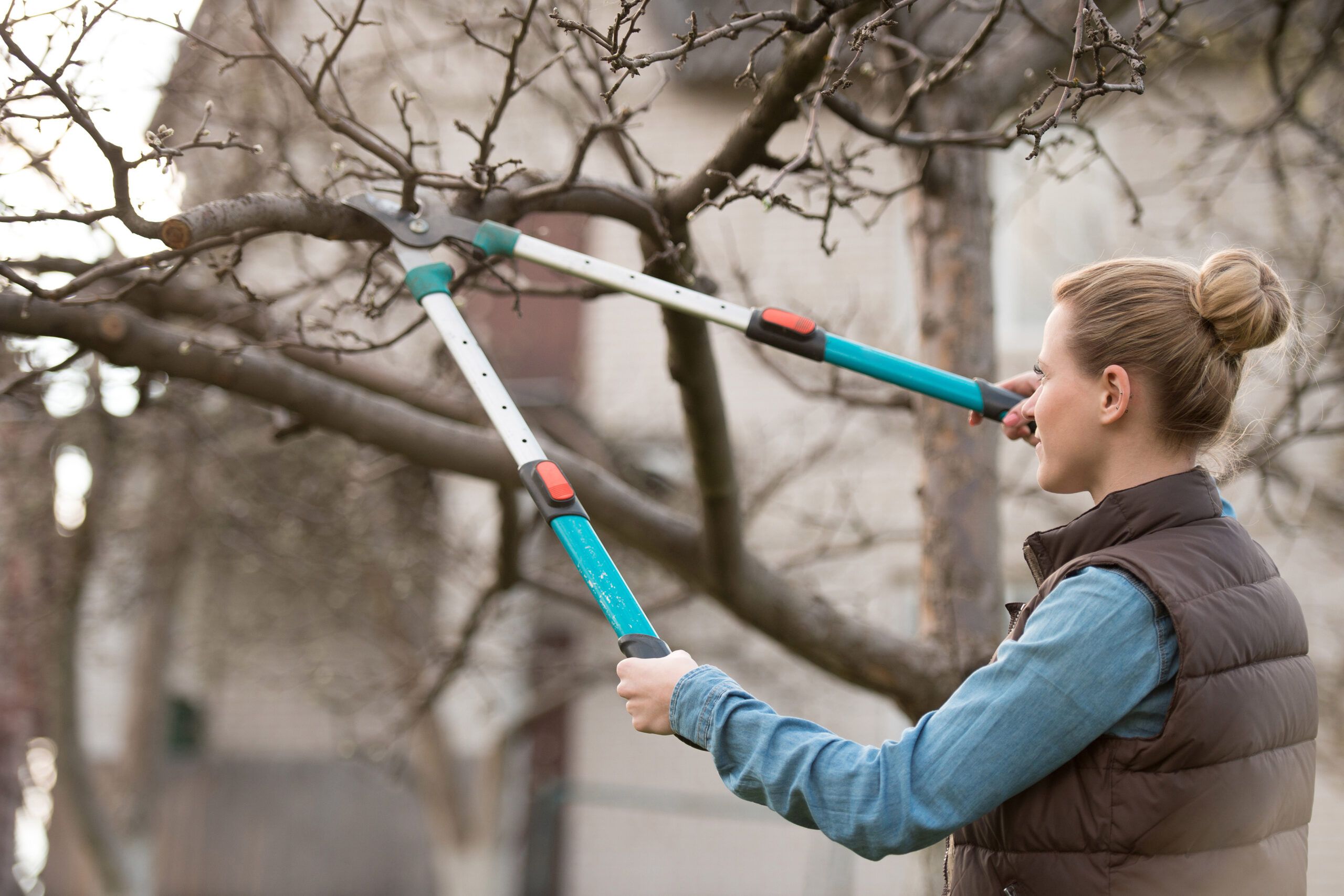Here is a spring yard clean-up checklist to tackle now to give your green patch a clean start.
Trees and Shrubs
Where tree or shrub branches have been damaged by cold, snow, and wind, prune back to live stems; use a handsaw for any larger than ½ inch in diameter. Shaping hedges with hand pruners, rather than electric shears, prevents a thick outer layer of growth that prohibits sunlight and air from reaching the shrub’s center. At right, Roger neatens up a yew by pruning wayward shoots back to an intersecting branch. Prune summer-flowering shrubs, such as Rose of Sharon, before buds swell, but wait to prune spring bloomers, like forsythia, until after they flower. Trim overgrown evergreens back to a branch whose direction you want to encourage.
Perennials and Grasses
Prune flowering perennials to a height of 4-5 inches and ornamental grasses to 2-3 inches to allow new growth to shoot up. Where soil has thawed, dig up perennials, such as daylilies and hostas, to thin crowded beds; divide them, leaving at least three stems per clump, and transplant them to fill in sparse areas. Cut back winter-damaged rose canes to 1 inch below the blackened area. On climbers, keep younger green canes and remove older woody ones; neaten them up by bending the canes horizontally and tipping the buds downward. Use jute twine or gentle Velcro fasteners to hold the canes in place. You'll need a pair of sharp bypass pruners makes a clean cut on both dead and living foliage.
Beds and Borders

Next on the spring yard clean up checklist, rake out fallen leaves and dead foliage (which can smother plants and foster disease), pull up spent annuals, and toss in a wheelbarrow with other organic yard waste. Once the threat of frost has passed, Roger also removes existing mulch to set the stage for a new layer once spring planting is done.
Push heaved plants back into flower beds and borders, tamping them down around the base with your foot, or use a shovel to replant them. Now is a good time to spread a pelletized fertilizer tailored to existing plantings on the soil’s surface so that spring rains can carry it to the roots.
Add a 5-10-10 fertilizer around bulbs as soon as they flower to maximize bloom time and feed next season’s growth. Use pins to fasten drip irrigation lines that have come loose and a square-head shovel to give beds a clean edge and keep turf grass from growing into them.
Composting
Dump collected leaves, cuttings, spent foliage, and last season’s mulch into your compost pile, or make a simple corral by joining sections of wire fence (available at home centers) into a 3-by-3-by-3-foot cube like the one above.
Shred leaves and chip branches larger than ½ inch in diameter to accelerate decomposition, or add a bagged compost starter to the pile. Keep the pile as moist as a wrung-out sponge, and aerate it with a pitchfork every two weeks. Just don’t add any early spring weeds that have gone to seed—they might not cook completely and could sprout instead.
Lawn Care

In colder climates grass starts growing in April, but early spring is a good time to test the soil’s pH so that you can assemble the right amendments. Remove turf damaged by salt, plows, or disease to prepare for the seeding that should follow in a few weeks.
Work in a ½-inch layer of compost to keep the new seed moist, increasing the germination rate. Begin seeding once forsythia starts blooming in your area. In warmer climates, March is a good time to add the first dose of fertilizer and crabgrass treatment.
Paths and Patios
Rake escaped gravel back into aggregate walkways and patios, and order more gravel to spread in large depressions, which often form near the driveway’s apron.
Refill joints between flagstones by sweeping in new sand or stone dust; water with a hose to set it, then repeat. If the freeze-thaw cycle has heaved pavers out of place, remove them and replenish the base material as needed before setting pavers back in.
Use a pressure washer with a low-pressure tip to remove slippery algae spots or leaf stains from patios and walkways.
Fences and Trellises

Remove badly rotted or damaged pickets, boards, or lattice, then scrub wood structures clean with a mix of 2 gallons water, 2 quarts bleach, and 1 cup liquid soap; let dry. Patch rotted sections with wood epoxy; install new wood as needed.
https://www.thisoldhouse.com/yards/21018330/smart-spring-yard-cleanup


